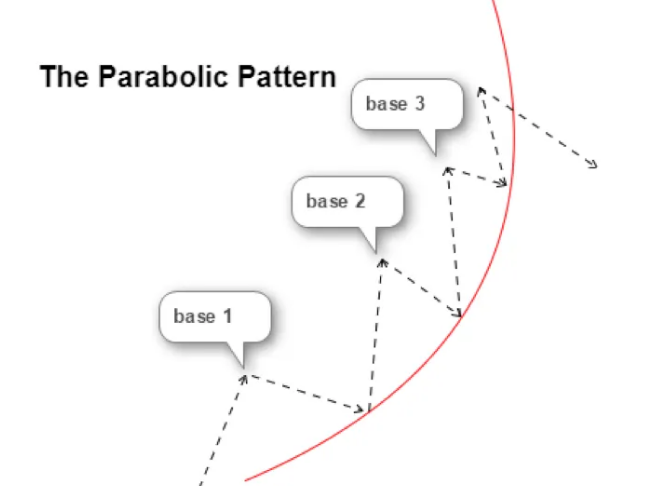
Drake Hampton
Apr 18, 2022 17:39
The Elliott Wave Theory is a technique for technical analysis created in the 1930s by American accountant and author Ralph Nelson Elliott. Elliott analyzed several years of stock market data across various indexes and was the first to forecast the 1935 stock market bottom. Several portfolio managers around the world have come to rely on the notion since then. Elliott waves are combined with other forms of technical analysis to forecast market moves and trading opportunities.
According to the Elliott Wave Theory, stock price fluctuations may be reasonably predicted by examining historical prices as markets move in wave-like patterns influenced by investor sentiment. The movements, like ocean waves, are repetitive, rhythmic, and punctual. Additionally, wave patterns are not considered definite to materialize in the markets; they merely give a scenario for stock price behavior.
Elliott Wave Theory is a market analysis technique founded on the premise that the market creates the same types of patterns on a shorter timescale (lower degree) as it does on a longer timescale (higher degree). These patterns provide insight into what the market may do next. According to the hypothesis, it does not matter the timeframe analyzed; market movements exhibit similar patterns.
R.N. Elliott originated the theory in the 1930s, and Robert Prechter popularized it in the 1970s. It asserts that crowd behavior generates the patterns and trends seen in financial markets; Elliott defines wave patterns as the physical manifestation of mass psychology in our society. These patterns emerge in markets and in any situation where humans make collective decisions. Examples include housing costs, fashion trends, and the number of individuals who travel the subway each day.
Elliott Wave theory is a type of technical analysis that looks for recurrent long-term price patterns associated with persistent shifts in investor sentiment and psychology.
The theory distinguishes between impulse waves that establish a pattern and corrective waves that run opposite to the overall trend.
Each wave is nested within a more extensive set of waves that follow the same impulse or corrective pattern, which is referred to as a fractal investment method.

Elliott Wave trading is a complicated and vast subject that takes years to learn. Despite its complexity, several fundamental features of Elliott wave trading can be implemented immediately and may aid in developing analytical abilities and trade timing.
"Trend" or "impulse" waves are classified by Elliott Wave Theory as one type of price movement, while "consolidation" waves are classified as the opposite. An experienced trader can identify the current wave cycle, recent waves, and the wave that is most likely to come next by examining a chart.
Minor waves that develop within and in opposition to a larger trend are known as corrective waves. Impulse waves tend to move the most, so traders often aim to trade in the direction of those waves. In other words, impulse waves offer a more significant opportunity for huge profits than corrective waves because a transaction riding an impulse wave is likely to be held for a longer period.
To profit from the following larger impulse wave, corrective waves are used to enter a trend trade. When anticipating an increase in the stock price, long traders should time their purchases to coincide with the end of a corrective wave, which will allow them to benefit from the subsequent upward price movement.
During a downtrend, short-sellers invert the strategy—they short the stock during a corrective wave up in order to ride the next impulsive wave down.
Aside from the impulsive and corrective waves, they are used to predict if a trend is ready to turn around or not. Stocks in an uptrend may be nearing the conclusion of their uptrend if the price falls significantly below the last upward impulse. Corrective waves beginning to resemble impulse waves suggest that the trend has shifted because the most important movement always occurs in the trend direction.
According to Elliott, there are three large price movements in the direction of the trend, followed by two corrections. After an initial surge and correction, the five-wave pattern is completed with another surge. Five waves are commonly referred to by the order in which they occurred. Since the second correction is known as "wave four," traders use this term to refer to it (the one that comes after the second impulse).
Within each correction, a comparable count of three movements can be made. A sharp move will be against the trend (the correction's impulse), followed by a minor move in the direction of the trend (the correction's correction). Then one more sharp move against the trend (the correction's second impulse) before the correction ends, and the trend continues. To avoid any confusion with the numerical waves of the major trend, corrective waves are referred to as A, B, and C.
Bear in mind that these movements are fractal, which means that patterns appear on short and long scales. For example, on a daily chart, the first impulse wave higher within an uptrend may consist of five waves. Each corrective wave (waves two and four) is composed of three smaller waves, and as the broader trend stops, there will also be giant A, B, and C waves (after wave five).
Corrections in an uptrend or a downtrend can be bought or sold. It is beneficial to understand the normal size of the correction. Unfortunately, there is no one-size-fits-all computation, but there are certain recommendations that can help you to decide where an impulse or correction should terminate.
Typically, wave three is the cycle's greatest wave. The second and fourth waves must be larger than the first, third, or fifth waves (otherwise, it is not an Elliott wave cycle).
Elliott made great use of the Fibonacci ratios while developing his wave theory. Traders may be familiar with these ratios as a result of the Fibonacci retracement tool included in the brokerage's charting software. This indicates that while individuals are analyzing Elliott waves, they should look for significant Fibonacci percentages such as 38%, 50%, and 62%.
For instance, if individuals monitor a correction following an impulse, they may use the Fibonacci retracement tool to add lines on their chart at 38 percent, 50%, and 62%. As the price movement approaches those lines, keep an eye out for indicators of weakness—they may signal the conclusion of the correction.
By only trading in the impulse waves direction, we may use the three principles covered here—impulse and corrective waves, trend structures, and correction sizes. You should look for trade entry indicators when the price has corrected an average amount during corrections. For this reason, it is necessary to utilize the percent levels as a reference point and wait for the chart to verify the suspicions before making a transaction."
Consider charting each wave in the broader price structure. For instance, a five-wave pattern to the upside is frequently followed by a more considerable three-wave decline. Observing the direction of the impulse waves will indicate prospective trend shifts, and this signal will be amplified if it is accompanied by the completion of a five-wave impulse pattern or a three-wave corrective pattern.
Investors can draw insight from many types of waves or price structures within Elliott Wave theory. For example, impulse waves encompass both an upward and downward trend and five sub-waves that might last hours or even decades. They follow three rules: the second wave cannot retrace more than 100% of the first wave; the third wave cannot be shorter than the first, third, and fifth waves; and the fourth wave cannot ever exceed the third wave. Along with impulse waves, corrective waves occur in three-dimensional patterns.
There are several dimensions to the Elliott Wave Theory, despite how some less-than-supportive traders may define it. It classifies waves according to their size, from smallest to largest:
Sub-Minuette
Minuette
Minor
Intermediate
Primary
Cycle
Supercycle
Exceptional Supercycle
Bear in mind that because the above waves are fractal and proportional to the size of the waves generated — which might occur within an hour or over the years — the magnitude of these waves is dictated by their relationship to one another. Additionally, because fractals can be endlessly large or small, wave size categories exist both above and below the spectrum of categories stated.
In day trading, this theory can be applied by identifying the supercycle—or major wave—and then buying when the pattern reaches its end, forecasting a reversal. While employing the Elliott Wave Theory presents specific problems on paper, this is precisely what makes this analysis method so effective: It is adaptable to a variety of wave types.
Additionally, it is worth noting that the Elliott Wave Theory is applicable to both short-term and long-term trading techniques. Indeed, some analysts say that the Elliott Wave Theory indicates that the stock market has been locked in a bear market formation since 2000, demonstrating the tool's potential breadth.
The Elliott Wave Theory adds value as a diagnostic tool for spotting prospective trade opportunities by offering a structure for arranging price movement data into simple-to-understand graphical representations. With a thorough understanding of the theory's guidelines, even novice traders can begin incorporating the theory into their tactics.
Elliott Wave trading's widespread acceptance also helps it. Because it is based on consumer psychology, its relevance to forex trading is increased when a large number of traders are studying and trading these patterns.
Despite its advantages, the Elliott Wave Theory has limits that might generate complexities and result in incorrect findings during trade analysis. Whereas Fibonacci patterns and similar methods provide traders with specific ratios and thresholds to monitor, Elliott Wave Theory is more subjective in its pattern identification. Traders must detect these patterns independently, and the price fluctuations indicating the start and conclusion of a wave can differ according to each trader's interpretation. As a result, some detractors believe that this approach is too arbitrary to provide consistent trading advice.
Additionally, the patterns may become so manufactured in the trader's mind that they lose their connection to the underlying real-world forces driving price movements. To circumvent these constraints, traders occasionally combine Elliott Wave trading with other oscillators, such as the relative strength and average directional indices. When Elliott signals coincide with the indicators provided by these tools, traders may have more trust in the trade suggestions made by these instruments.
As with any signal or chart pattern, the Elliott Wave Theory cannot be used in isolation to predict trading opportunities. Waves should always be utilized in conjunction with other types of analysis, such as economic news and technical indicators, which can either confirm or refute the Elliott Wave Theory's predictions.
When overbought or oversold conditions converge with wave indicators, and both indications hint in the direction of an anticipated price swing, this may improve a trader's confidence in initiating a position.
If a negative Elliott Wave indication is detected concurrently with the 50-day SMA, indicating downward momentum, this may bolster the case for a price decrease. On the other hand, a bullish Elliott Wave indicator combined with upward momentum based on the 50-day SMA may suggest a long position in that currency pair.
When attempting to identify the setup of a five-wave structure, the MACD line can assist in identifying the third wave, which is often the longest and strongest wave in the structure. This enables traders to recognize a five-wave structure as it forms rather than after the pattern is complete.
The Elliott Wave Theory, like many other technical analysis-based ideas, has its adherents and detractors. A major drawback of the idea is that individuals who adhere to it might blame their stumbles on chart reading rather than the theory itself, and another is that the cycle's length is open-ended.
However, it should be emphasized that traders who adhere to the Elliott Wave Theory are typically zealous about it, suggesting that there is more to the waves than doubters believe.
Elliott wave patterns are fractal and should apply to any time frame. As a result, the "optimal" time frame to utilize is the one in which traders are most comfortable. One-minute, five-minute, or one-hour candles may be used for day traders. Four-hour, daily, or weekly candles may be used for swing traders. If they are unsure of their strength, they can experiment with several time frames with a demo account to determine which one works best.
If a wave violates a rule, such as a wave three failing to surpass the high of wave one, the initial estimate of the waves was incorrect, and we must "recount." Individuals may need to zoom out or switch to a different time frame to re-calibrate their idea regarding the stock's position inside the Elliott wave count.
Consider the trend where a trader detects that a stock is advancing on an impulse wave. They may buy stocks and hold them until they complete their fifth wave. If the trader anticipates a reversal, he or she may sell short the stock. This trading theory is predicated on the premise that fractal patterns reoccur in financial markets. In mathematics, fractal patterns repeat indefinitely.
Elliott Wave Theory continues to bring a bit of order to markets for a huge number of persons internationally. The capacity to constantly adjust the theory in response to a rule violation can make it more difficult to use the theory to place trades. However, it significantly improves the art of trend recognition. While the degree to which a trader decides to complicate Elliott's initial guidelines is entirely up to them, it is undoubtedly an approach that many choose to prioritize in their market tactics.

Apr 18, 2022 17:25

Apr 18, 2022 17:53